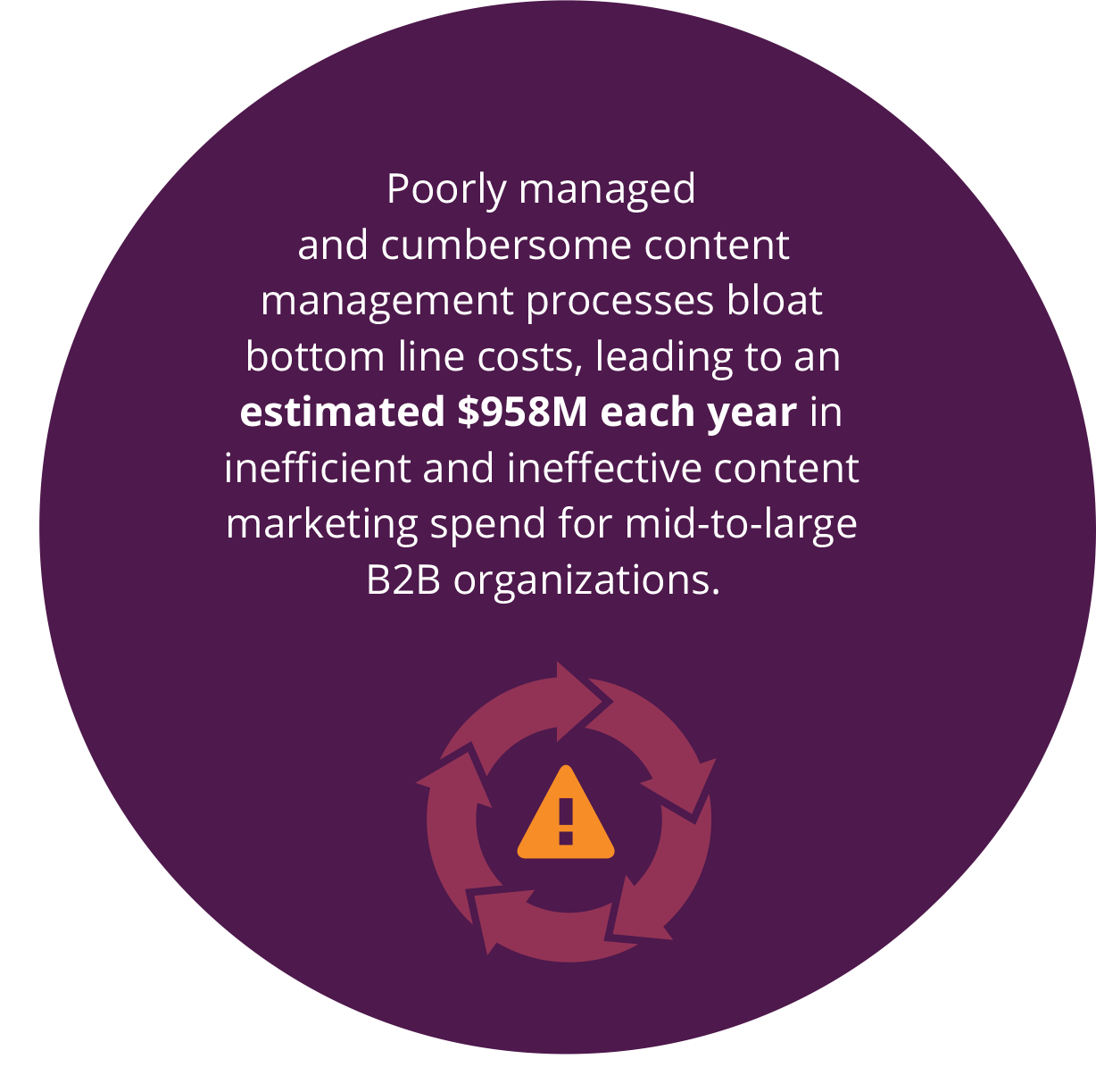By now, you know that content is the future of marketing.
As Accenture’s “2015 State of Content Report” puts it, “content is arguably a marketer’s most vital natural resource; it fuels and sustains the marketing activities that connects businesses with customers and drives business outcomes.”
The strategic decisions that you make now will impact whether your content program is successful in the long-term.
But there are challenges that can get in the way. For one, audience attention spans are becoming increasingly scatterbrained. Meanwhile, overall content volume is growing—92% of brands are creating more content in 2015 than they did two years prior, according to Accenture—and it’s getting harder for companies to stand out.
Because content has the potential to be so valuable, it takes time, attention, and resources to get right. From blog topic ideation to determining which assets to create, the strategic decisions that you make now will impact whether your content program is successful in the long-term. In addition to evaluating the big picture, marketing leaders need to pay attention to optimizing their team’s content budgets.
Here are three suggestions to help your content program run more efficiently and increase results in terms of stronger relationships with prospects and customers.
1. Pre-plan content use cases.
 As Accenture points out, there is “no singular fix to mastering content.”
As Accenture points out, there is “no singular fix to mastering content.”
Whether you’re running a blog, publishing eBooks, or designing infographics, you’ll need to go through a period of experimentation and iteration before you have a strategy that takes off. Facing ambiguity and uncertainty, marketers will often jump into their content programs and start publishing. But rather than implementing marketing programs that are tailored to their audience’s needs, they’ll make investments until something sticks.
Lack of direction can easily become a massive resource drain
Given that content is expensive to produce, this lack of direction can easily become a massive resource drain. Let’s say that your ideas are off-base: you could end up losing time and money that you could have invested into other aspects of your marketing.
Related: 8 Simple Marketing Templates for Planning Content Strategy [FREE Download]
That’s why it’s important to pre-plan how you plan to use your content, even before you take the time to develop it. Let’s say that you’re writing a blog post, for instance. You could promote it on Facebook or LinkedIn with ads, share it with your sales teams to help win over new business, or distribute it to your existing customer base by bundling it into your support workflows.
By pre-planning your content use cases upfront, you’ll be able to focus your content program to the exact marketing goals that you’re looking to achieve.
2. Tailor topics to your audience.
Brainstorming new content ideas? Don’t just choose topics because you think that they’ll work. Instead, research what your prospects and customers are talking about by:
- Reading forums
- Researching popular blogs
- Interviewing them about their needs and goals
This process will allow your team to adapt to the language of your customers, directly from the source rather than through a degree of separation.
You only have a split second to reach your target buyer with the right message
Given the volume of content that exists online—and that audience attention spans are spread thin—you only have a split second to reach your target buyer with the right message. If you rely on assumptions or guesswork to guide your ideation process, you’ll risk missing the mark and wasting valuable content dollars. Ideation takes time and careful planning: give careful attention to the process to ensure that your ideas are on point.
Related: The First-Ever Research on Marketing Content Ideation
3. Measure results holistically.
For your content program to succeed, you need to be measuring your results. By establishing targets early on and embracing your key performance indicators (KPIs) as central to your strategy, you’ll help your team develop a sustainable path to growth.
While this idea sounds straightforward in theory, almost every marketer will tell you that it’s difficult to execute. For one, buyer journeys and paths to sale are complex; content may influence a purchase decision without the customer even realizing it.
Related: Build Your Own Marketing Metrics Dashboard [Template]
In addition to measuring conversions from a last-touch perspective, marketing leaders need to understand the many different ways that content drives revenue and engagement. By focusing immediate sales and leads that come from your blog, you’ll risk overlooking important performance drivers that are hidden beneath the surface of your strategy.
The Bottom Line
If you’re running a marketing program, you need to allow ample time for planning and analysis. Success with content marketing is a moving target. If you want your teams to succeed, make sure that they have the time, resources, and space to run effective experiments and evolve in their strategic approaches over time.
